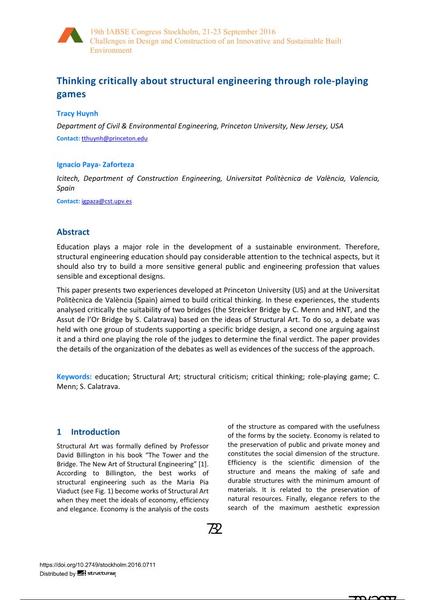Thinking critically about structural engineering through role-playing games

|
|
|||||||||||
Détails bibliographiques
| Auteur(s): |
Tracy Huynh
(Department of Civil & Environmental Engineering, Princeton University, New Jersey, USA)
Ignacio Payá-Zaforteza |
||||
|---|---|---|---|---|---|
| Médium: | papier de conférence | ||||
| Langue(s): | anglais | ||||
| Conférence: | IABSE Congress: Challenges in Design and Construction of an Innovative and Sustainable Built Environment, Stockholm, Sweden, 21-23 September 2016 | ||||
| Publié dans: | IABSE Congress Stockholm, 2016 | ||||
|
|||||
| Page(s): | 732-738 | ||||
| Nombre total de pages (du PDF): | 7 | ||||
| Année: | 2016 | ||||
| DOI: | 10.2749/stockholm.2016.0711 | ||||
| Abstrait: |
Education plays a major role in the development of a sustainable environment. Therefore, structural engineering education should pay considerable attention to the technical aspects, but it should also try to build a more sensitive general public and engineering profession that values sensible and exceptional designs. This paper presents two experiences developed at Princeton University (US) and at the Universitat Politècnica de València (Spain) aimed to build critical thinking. In these experiences, the students analysed critically the suitability of two bridges (the Streicker Bridge by C. Menn and HNT, and the Assut de l’Or Bridge by S. Calatrava) based on the ideas of Structural Art. To do so, a debate was held with one group of students supporting a specific bridge design, a second one arguing against it and a third one playing the role of the judges to determine the final verdict. The paper provides the details of the organization of the debates as well as evidences of the success of the approach. |
||||
